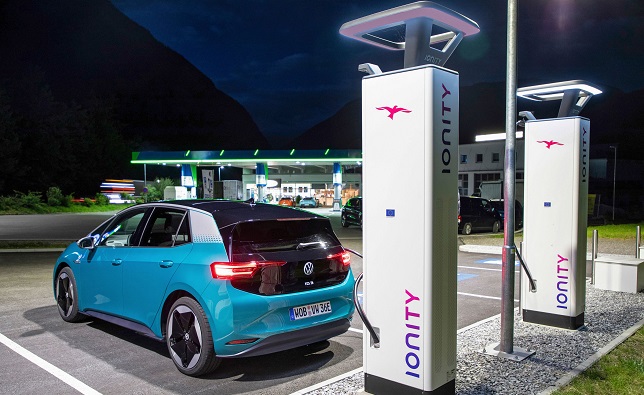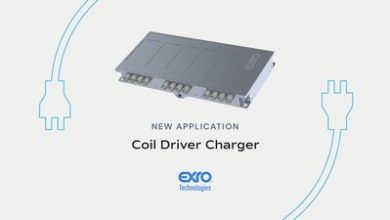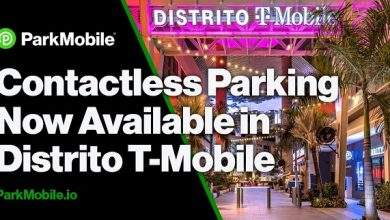Convenient, networked and sustainable: new solutions for charging electric Volkswagen models

Volkswagen is the high-volume manufacturer to offer its customers a universal and seamless eco-system for charging their electric models. The service with the name We Charge will be enhanced step-by-step to offer higher performance, convenience and sustainability – with new charging solutions for home and mobile charging, new functions in the ID. models and soon also with the technology of bidirectional charging.
“The across-the-board enhancement of the charging infrastructure is decisive for accelerating the ramp-up of the electric mobility campaign. Charging must become simpler and easier to integrate into daily activities,” explains Silke Bagschik, CMO ID. Digital and Head of Marketing & Sales, Product Line e-Mobility at Volkswagen. “With the new software in our ID. Models along with solutions like Plug & Charge, we as a manufacturer are making a decisive contribution to realising such goals.”
Thinking beyond the car. The Volkswagen Group is establishing important prerequisites for the success of the brand’s electric offensive. “Our goal is to ensure that an electric vehicle is capable of being a customer’s primary car – without any compromises. That is why we are building a complete charging eco-system, with residential charging solutions and a rapid expansion of the fast-charging infrastructure required for mobile charging, as well as competent advice, comprehensive charging tariffs and the right fleet solutions for business customers,” says Elke Temme, Head of the Charging and Energy business area at Volkswagen Group Components and CEO of Elli. “We also have a clear strategic objective. We want to make it possible for the batteries in our electric vehicles to be used on the energy market as flexible, mobile energy storage units. Such energy storage options are essential for increasing the share of renewable energies. In addition, this can also make charging significantly cheaper for customers, and they will then be able to feed their own power into the public grid.”
Charging at home. The electrically powered Volkswagen models can already be conveniently charged in the garage at home – using the ID. Charger, for example, the home charging station from the Group brand Elli. Customers can choose here between the basic version and two fully networked variants, which they can control using the We Connect ID. App on their smartphone. In Germany, the Volkswagen brand also offers a suitable electricity supply contract with “Volkswagen Naturstrom”, to guarantee fully certified green electricity from renewable energies.
Mobile charging – also with Plug & Charge in future. With the We Charge charging card, We Charge customers already have access to one of the largest charging networks in Europe. Over 270,000 public charging points are already connected – both in towns and on long-distance routes. And this number is increasing all the time. By 2025, the Volkswagen Group will also install around 18,000 fast charging stations in Europe – together with powerful partners. These will be supplemented by approximately 35,000 charging points that will be established with retail partners – many of which will be publicly accessible.
In 2022, Volkswagen’s ID. models will already be provided with a new function that will replace the current charging card authentication process to make charging at fast charging stations even simpler. Here, encrypted and secure communication in accordance with the ISO 15118 standard will be started between the car and charging station as soon as the customer plugs in the charging cable. This authentication process takes just a few seconds before charging starts. Billing then functions in the usual way via the We Charge contract. In 2022, Plug & Charge will be possible in the networks of Ionity, Aral, bp as well as EON. Discussions are ongoing with other major partners.
The next level: intelligent charging and bidirectional charging. A Home Energy Management System (HEMS) is a prerequisite for intelligent charging at home. This system recognises all the requirements of consumers so that it can stagger and manage their power supply intelligently. The main benefit of this is that it makes charging with self-generated solar power even easier for owners of photovoltaic systems.
What’s more, clever electricity tariffs and algorithms already make it possible to charge the car at the point at which a lot of renewable energy is available. This means, for example, that wind turbines won’t need to be shut down because there isn’t anyone using them. In 2019 alone, 6,500 gigawatt hours of renewable energy went unused in Germany – enough to have powered 2.7 million electric cars for a year.
But the potential is even greater in combination with bidirectional charging – a ground-breaking technology about to be launched at Volkswagen: the electric cars can feed electricity they don’t need into the customer’s home network (vehicle-to-home) and in the future they will also provide electricity to stabilise the electricity grid. All ID. models with a 77 kWh battery will have this capability in future. An over-the-air update rolled out gradually will be used to make this available for vehicles already delivered as well. A special DC BiDi wallbox will be used for the power transfer and communication.
New software for the ID. models. In the near future, all ID. models will leave the production line with a new software version that offers significant benefits for charging. The maximum power rating for the 77-kWh battery will increase from 125 to 135 kW (or 150 kW for the ID.5 GTX02). This will cut the charging time by up to nine minutes when charging from 5 to 80 percent SOC (state of charge). These improvements will be activated in already delivered customer vehicles by means of a software update in the near future. There is also a new Battery Care Mode that ensures maximum protection of the battery. This restricts the upper charge level (SOC) to 80 percent.
The charging menu, which now appears on the top level of the large touch display in the ID. models, will also be structured in a more informative and clearer way. The Online Route Calculation function in the navigation system performs intelligent multi-stop route planning for long journeys so that the vehicle can reach the destination as quickly as possible. The function uses traffic and route data as well as the desired charge level at the destination for this purpose. The charging stops are evaluated dynamically on the basis of the charging station capacity and occupancy level. As a result of this, the route planning function may suggest two short charging operations with high power instead of a long charging stop with low power.
Support for expansion of renewable energy generation. As the first car manufacturer, the Volkswagen brand is supporting the expansion of renewable energies by means of new wind and solar farms in Europe. The goal here is to additionally generate and feed into the grid the amount of green electricity that the vehicles of the ID. family need for operation and that is not already charged by customers in the form of green power. It is planned to build around 20 new installations by 2025. These will generate around seven terawatt-hours of additional green electricity each year, equivalent to over 300 new wind turbines. Volkswagen will invest around 40 million euros for this by 2025.
The strategic objective of the Volkswagen brand. At the heart of the Way to ZERO decarbonisation programme is the expedited ramp-up of the electric mobility campaign under the brand strategy ACCELERATE. Volkswagen intends to be climate-neutral by 2050 at the latest. As an interim goal, it is planned to reduce the CO2 emissions per vehicle in Europe by 40 percent by 2030 (basis: 2018). The aim is also to make the manufacturing process, including the supply chains, and operation of electric cars climate-neutral. This will be complemented by systematic recycling of the high-voltage batteries from old electric vehicles.
The goal is complete electrification of the new vehicle fleet. By 2030, it is planned that at least 70 percent of Volkswagen’s sales in Europe will come from fully electric vehicles, which is equivalent to significantly more than one million vehicles. In North America and China, the goal is that electric vehicles will account for at least 50 percent of unit sales. To achieve these goals, Volkswagen will launch at least one electric vehicle onto the market every year.





